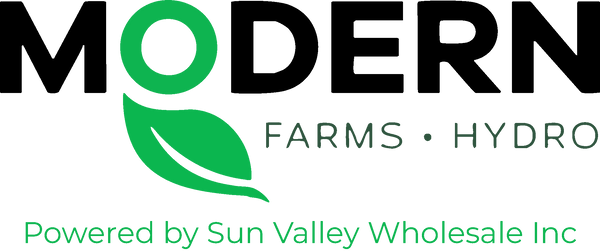Gavita
Gavita Master Controller EL3 Grow Light Controller
Gavita Master Controller EL3 Grow Light Controller
19 in stock
Couldn't load pickup availability
Payment options
- Fast Delivery
- Easy Returns
- Secure Checkout
Description
Description
The Gavita Master Controller EL3 is the next generation in our EL controller series, designed to maximize the performance of your compatible fixtures. The EL3 enables you to set sunrise/sunset dimming, high-temperature dimming, and high-temperature shut-off for all connected fixtures. Best of all, the EL3 lets you build and program entire schedules for your growing cycles. When using a compatible Gavita or Sun System LED fixture, you will be able to view at the individual fixture level, how each one is performing.
Connect up to 16 Titan Controls NEW environmental Sensors (Sold Separately) to monitor and track crucial environmental data such as VWC and EC with the Triton Substrate Sensor or VPD, with the Tali VPD Sensor. To connect to Titan Environmental Sensors, each EL3 comes with a Titan Sensor Adaptor Cable, packaged separately.
8-inch touchscreen interface
Controls up to 512 fixtures
Easily updatable via USB
Spray feature dims lights to help protect against crop burn during spray applications
Data logging saves setting history for trend and performance data
The Gavita Master Controller EL1 and EL2 are entry-level systems for centrally controlling large rooms with e-series fixtures. These controllers feature improved and expanded functionality that raises the bar.
High-temperature dimming and safety feature shut-off
Event logging
Independent sunrise and sunset settings
Independent light cycles and Programmable External Contactor Modules (ECMs) on the EL2
Note: If using the EL1/2 controller with one of Gavitas LED fixtures (1700e/900e/CT1930e), the purchase of HGC906717 or HGC906716 is required.
Share


INFORMATION QUESTIONS
FREQUENTLY ASKED QUESTIONS
What is Hydroponics?
Hydroponics is the science of growing plants without soil. The plants thrive on the nutrient-water solution alone. The growing medium merely acts as a support for the plants and their root systems while the solution passes freely. The growing medium, if any, is totally inert.
What types of plants grow best hydroponically?
Anything can be grown hydroponically, but some plants prove to be more space efficient. Some plants we suggest are tomatoes, sweet peppers, hot chilies, lettuce, spinach, squash, cucumbers, broccoli, beans, snow peas, herbs and flowers of all types.
Can you REALLY get better yields/quicker growth?
Absolutely. The plants, when receiving everything they need, tend to be healthier, faster growing and generally more productive. You can expect 30% faster growth with many crops.
What are the watering cycle timelines hydroponic systems?
Once the reservoir is filled with nutrients, it is time to put your hydro system to work! The ease of hydroponics is automation – automation is achieved by putting the pump on a timer according to your watering needs. The watering cycle depends on growth stage, growing medium and hydroponic system. In an ebb and flow or drip system with rockwool as the medium, seedlings, clones and plants in the early vegetative stage require watering only once a day for 15-30 minutes (twice a day for higher temps). Mature, flowering and fruiting plants require a heavier feed and can be fed once a day for 30 minutes (twice a day for higher temps). Typically soiless mixes and coco fiber can be watered for about 15 minutes twice a day, and can be adjusted for heavier feeding during the flowering and fruiting stage or higher temps. ViaStone, Hydroton, Grow Rocks, and Silicate mediums need to be watered more frequently – a constant drip for drip systems, and about 15-30 minutes every 3 hours for ebb and flow systems and can be adjusted for heavier feeding during the flowering and fruiting stage or higher temps. Aeroponic systems require frequent watering cycles; 30-60 seconds every few minutes or a constant spray.
What do I need to test pH? How do I test pH?
pH has a range from 0 (acidic) – 14 (alkaline), with 7 being neutral. A proper hydroponic pH range is between 5.5 to 6.2 for most hydroponic crops. For specific crop pH, check out our Plant Guide. pH must remain within the proper range for good plant health, disease resistance, and proper nutrient uptake. pH is maintained by adding pH Up and pH Down to the nutrient solution. For more information, see the Testssection of our site.
How will the flavor compare to my outdoor grown, organic produce?
The taste may be even better! This is simply due to the fact that the hydroponically grown plants are getting everything they need, when they need it. Don’t be fooled by “hot house” produce grown commercially. The grower’s primary concern is shipability and storage, not flavor. When you grow your own vegetables at home, you can expect nothing less than excellent results. Plus, hydroponically grown produce has the added benefit of a longer shelf life.


